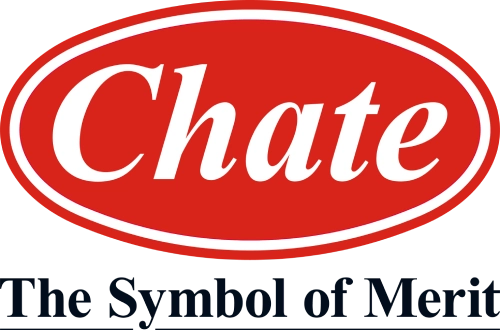Introduction
In an age where industrial pollution threatens our environment and clean water sources are rapidly declining, Indian researchers have made a groundbreaking discovery that could revolutionize how we purify water. Scientists at the Indian Institute of Technology (IIT) Guwahati have developed an innovative, low-cost, and eco-friendly technique to clean polluted water using something as simple as fruit waste.
By transforming discarded pineapple crowns and mosambi (sweet lime) fibers into biochar, the researchers have achieved up to 99% removal of toxic pollutants from industrial wastewater. The innovation not only offers a sustainable solution to water pollution but also gives new life to agricultural and food waste that would otherwise go unused.
This exciting breakthrough demonstrates how scientific creativity and sustainable thinking can come together to solve some of India’s most pressing environmental challenges.
The Growing Problem of Water Pollution
India’s industrial growth has come at a heavy environmental cost. Industries such as textiles, leather, paper, and chemicals produce large amounts of wastewater containing harmful dyes, metals, and organic compounds. According to recent studies, over 70% of surface water in India is contaminated, making it unsafe for drinking or agricultural use.
Traditional wastewater treatment methods like chemical coagulation, filtration, and reverse osmosis are expensive, energy-intensive, and often inaccessible to smaller industries or rural communities.
This is where the IIT Guwahati breakthrough stands out. It offers a simple, low-cost, and eco-friendly alternative that can be scaled for both industrial and rural use, helping India move closer to its goal of sustainable environmental management.
How the IIT Guwahati Discovery Works
The process developed by the IIT Guwahati research team centers around a technique called pyrolysis, which involves heating organic waste materials in the absence of oxygen. This process converts the waste into biochar, a porous, carbon-rich substance known for its excellent adsorption properties.
Two Types of Biochar Developed
- ACBC (Ananas Comosus Biochar) – derived from pineapple crowns
-
- Achieved 99% removal of pollutants from wastewater
- MFBC (Citrus Limetta Biochar) – derived from mosambi fibers
-
- Achieved 97% removal of pollutants
These biochars are used to absorb and trap toxic substances like dyes, heavy metals, and industrial residues from water. The entire cleaning process takes less than five minutes, making it far faster than most existing methods.
Even more impressive, the biochar can be reused multiple times without losing its effectiveness. This reusability makes the process both cost-efficient and sustainable for long-term industrial use.
What Makes Biochar So Effective
Biochar is not a new discovery, but IIT Guwahati’s approach to creating it from fruit waste adds a fresh perspective. The reason this material works so effectively lies in its porous structure and surface chemistry.
Each tiny pore in the biochar acts like a sponge, attracting and trapping pollutants from water. Additionally, the natural composition of pineapple and mosambi waste provides an ideal balance of carbon and oxygen groups, improving adsorption capacity.
Laboratory analysis showed that:
- The surface area of the biochar was high enough to trap fine pollutants.
- The adsorption rate was among the fastest reported for natural materials.
- The recovery and reuse potential made it suitable for industrial-scale applications.
In simple terms, the fruit waste acts like a natural magnet for toxins, pulling them out of the water and leaving it clean and reusable.
A Step Toward Sustainable Waste Management
One of the most remarkable aspects of this discovery is its ability to address two major environmental issues simultaneously:
- Waste disposal from fruits and agriculture.
- Water pollution from industries.
Every year, India generates millions of tonnes of fruit waste that often ends up in landfills, creating methane and contributing to greenhouse gas emissions. By converting this waste into biochar, IIT Guwahati’s research provides a circular economy solution, where waste from one system becomes a valuable input for another.
This approach aligns perfectly with India’s commitment to the UN Sustainable Development Goals (SDGs), particularly:
- Goal 6: Clean Water and Sanitation
- Goal 12: Responsible Consumption and Production
- Goal 13: Climate Action
Why This Breakthrough Matters
Water scarcity and pollution are not just environmental issues; they are economic and social challenges that affect millions. Rural and industrial regions across India face a constant struggle to access clean water for drinking and manufacturing.
The IIT Guwahati innovation offers hope on several fronts:
- Low Cost: Fruit waste is abundant and nearly free, making the process affordable.
- High Efficiency: Removes up to 99% of pollutants in minutes.
- Sustainability: Reduces waste and environmental harm simultaneously.
- Reusability: Biochar can be recycled for multiple treatment cycles.
- Scalability: Can be implemented in industries, rural communities, and municipal plants.
If adopted widely, this technology could transform how industries handle wastewater, drastically cutting costs while improving environmental outcomes.
Voices Behind the Innovation
The research team was led by Dr. Gopal Das, a senior scientist at IIT Guwahati. He highlighted the project’s larger vision, stating:
“This work shows how waste materials can be turned into valuable resources to fight pollution. Our goal is to make clean water accessible to everyone while reducing environmental waste.”
The project also involved a team of young researchers and PhD scholars who worked on optimizing the pyrolysis process, characterizing the biochar, and testing its efficiency under various industrial conditions.
Their dedication and innovation showcase how Indian scientists are taking the lead in sustainable environmental technology.
Potential Industrial Applications
The biochar developed at IIT Guwahati could be a game-changer for multiple industries, including:
- Textile & Dye Manufacturing: Removes colorants and chemical residues from effluent water.
- Food Processing Units: Treats organic waste and byproducts safely.
- Paper & Pulp Mills: Absorbs chlorine and heavy metals.
- Chemical Plants: Removes synthetic compounds and toxic pollutants.
- Municipal Treatment Systems: Can be used for local wastewater purification.
Because of its simple operation and low maintenance, this system could be installed even in small-scale factories, rural communities, or temporary treatment units near polluted water bodies.
Future Prospects and Ongoing Research
While the current focus has been on industrial wastewater, the researchers at IIT Guwahati are now exploring broader applications for this technology.
1. Clean Drinking Water for Rural Areas
India’s rural population often faces water scarcity and contamination from natural or man-made sources. The team plans to adapt the same biochar technology for affordable drinking water purification, especially in remote regions.
2. Large-Scale Environmental Cleanup
Tests are being conducted to see how biochar performs in cleaning contaminated lakes, rivers, and groundwater. If successful, it could become a core tool in India’s environmental restoration projects.
3. Commercial Production and Partnerships
Discussions are underway with industry partners and startups for mass production of biochar filters. Commercial viability will help bring this innovation to market faster, ensuring it reaches industries and households that need it most.
How Students and Researchers Can Learn from This
This discovery offers several key lessons for students, especially those pursuing engineering, chemistry, and environmental science:
- Innovation can come from simple ideas. The use of fruit waste shows that sustainability and creativity go hand in hand.
- Interdisciplinary learning is powerful. This project combined knowledge of chemistry, materials science, and environmental engineering.
- Real-world impact matters. Research that solves practical problems has lasting social and economic value.
At Chate Coaching Classes, we encourage our students to think beyond textbooks—to imagine innovative solutions that contribute to a cleaner, smarter, and more sustainable India.
Global Significance of the Research
Around the world, countries are seeking affordable solutions to tackle industrial wastewater pollution. Most advanced water purification systems rely on synthetic filters, chemical treatments, or energy-intensive technologies.
IIT Guwahati’s discovery stands out because it:
- Uses biodegradable, natural materials.
- Works fast and efficiently.
- Supports developing economies with limited resources.
This Indian innovation has the potential to gain international recognition, especially among nations in Asia, Africa, and South America, where industrial pollution and waste management challenges are similar.
Conclusion
The IIT Guwahati fruit waste biochar project is a powerful example of how science can turn simple materials into life-changing technologies. By converting pineapple crowns and mosambi fibers into a tool that cleans polluted water, the researchers have provided a sustainable, low-cost, and high-impact solution to one of the world’s biggest challenges.
As this technology moves from laboratory to large-scale application, it promises to transform wastewater treatment, improve environmental health, and promote sustainable development across India and beyond.
At Chate Coaching Classes, we celebrate such innovations that reflect the spirit of Indian science and inspire the next generation of students to build a greener, smarter future.










